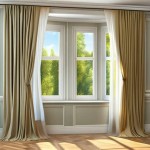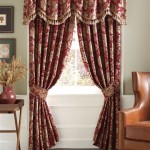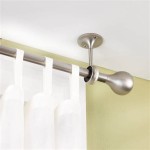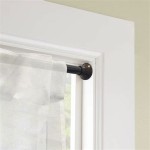Single Panel Curtains for Sliding Glass Doors: A Comprehensive Guide
Sliding glass doors offer numerous advantages, including enhanced natural light, seamless indoor-outdoor transitions, and increased ventilation. However, they also present challenges in terms of privacy, light control, insulation, and aesthetics. Single panel curtains offer a viable solution for addressing these issues, providing a simple yet effective way to manage the features of sliding glass doors.
This article provides a comprehensive guide to single panel curtains for sliding glass doors, exploring their benefits, functionalities, material options, installation considerations, and maintenance tips. It aims to equip readers with the knowledge necessary to make informed decisions about incorporating single panel curtains into their homes.
Benefits of Using Single Panel Curtains for Sliding Glass Doors
Single panel curtains offer a range of benefits that contribute to the functionality and aesthetics of a living space. Their advantages extend beyond simple window coverings, offering practical solutions to common issues associated with sliding glass doors.
Light Control: One of the primary benefits of using single panel curtains is their ability to control the amount of natural light entering a room. Sliding glass doors, by their nature, allow a significant amount of sunlight to penetrate indoor spaces. While natural light is desirable, excessive sunlight can lead to glare, overheating, and fading of furniture and flooring. Single panel curtains, available in various opacities, allow homeowners to regulate light levels based on their specific needs and preferences. Sheer curtains diffuse light gently, creating a soft and airy ambiance, while blackout curtains block out light completely, ideal for bedrooms or media rooms. The flexibility in light control makes single panel curtains a versatile solution for various spaces.
Privacy: Sliding glass doors can compromise privacy, especially in densely populated areas or homes with close proximity to neighbors. Single panel curtains provide a simple and effective means of ensuring privacy. By drawing the curtains closed, homeowners can restrict the view into their homes, preventing unwanted attention. The level of privacy afforded by single panel curtains depends on the fabric's opacity. Thicker, heavier fabrics provide greater privacy than thin, sheer materials. The option to choose a fabric that meets specific privacy requirements makes single panel curtains an adaptable solution for any home.
Insulation: Sliding glass doors, due to their large surface area and often single-pane construction, can be a significant source of heat loss in the winter and heat gain in the summer. This can lead to increased energy consumption and higher utility bills. Single panel curtains, particularly those made from thick, insulated fabrics, can help to mitigate these effects. These curtains create a barrier between the indoor and outdoor environments, reducing heat transfer and improving energy efficiency. By minimizing heat loss in the winter, single panel curtains help to keep homes warm and comfortable. Conversely, in the summer, they help to block out solar heat, keeping homes cooler and reducing the need for air conditioning. The insulating properties of single panel curtains can contribute to significant energy savings over time.
Aesthetics: Beyond their functional benefits, single panel curtains can enhance the aesthetic appeal of a room. They can add color, texture, and visual interest to a space, complementing the existing décor. Single panel curtains are available in a wide range of styles, colors, patterns, and fabrics, allowing homeowners to find options that suit their personal taste and preferences. Whether looking for a minimalist, modern look or a more traditional, ornate style, there are single panel curtains to match. The right curtains can tie a room together, creating a cohesive and inviting atmosphere. Furthermore, single panel curtains can visually soften the hard lines of sliding glass doors, adding a touch of elegance and warmth to the space.
Ease of Use: Single panel curtains are relatively easy to install and operate. Unlike more complex window treatments such as blinds or shades, they require minimal effort to open and close. Single panel curtains typically hang from a rod or track, and can be easily drawn across the door opening. This simple operation makes them a convenient option for everyday use. Furthermore, single panel curtains are easy to clean and maintain, requiring only occasional dusting or vacuuming. Their straightforward design contributes to their user-friendliness and practicality.
Material Options for Single Panel Curtains
The choice of material for single panel curtains significantly impacts their performance, aesthetic appeal, and durability. Understanding the properties of different fabrics is crucial for selecting the right curtains for a specific space and purpose.
Cotton: Cotton is a popular choice for single panel curtains due to its affordability, versatility, and availability in a wide range of colors and patterns. Cotton curtains are lightweight and breathable, making them suitable for warmer climates. They are also easy to care for and can be machine washed. However, cotton curtains tend to wrinkle easily and are not as effective at blocking light or providing insulation as some other materials. They are best suited for rooms where moderate light control and privacy are desired.
Linen: Linen is a natural fiber that is known for its elegant drape and texture. Linen curtains offer a relaxed and sophisticated look, adding a touch of luxury to any room. They are breathable and allow natural light to filter through, creating a soft and airy ambiance. Linen curtains are also relatively durable and can withstand regular use. However, linen is prone to wrinkles and requires more careful handling than cotton. It is also more expensive than cotton, making it a less budget-friendly option.
Polyester: Polyester is a synthetic fabric that is known for its durability, wrinkle resistance, and affordability. Polyester curtains are easy to care for and can be machine washed and dried. They are also resistant to fading and shrinking, making them a good choice for rooms that receive a lot of sunlight. Polyester curtains are available in a wide range of colors and patterns, offering versatility in design. However, polyester is not as breathable as natural fibers like cotton or linen, and it may not provide the same level of comfort in warmer climates. It’s also not as environmentally friendly as natural fibers.
Velvet: Velvet is a luxurious fabric that is known for its soft texture and rich color. Velvet curtains add a touch of elegance and drama to any room. They are also effective at blocking light and providing insulation, making them a good choice for bedrooms or media rooms. However, velvet is a delicate fabric that requires special care. It is also more expensive than other materials and may not be suitable for high-traffic areas.
Blackout Fabrics: Blackout fabrics are specially designed to block out light completely. These fabrics are typically made from multiple layers of material, including a dark inner layer that absorbs light. Blackout curtains are ideal for bedrooms, nurseries, or media rooms where complete darkness is desired. They are also effective at providing insulation and reducing noise. Blackout fabrics can be made from a variety of materials, including polyester, cotton, and velvet. The price and care requirements vary depending on the specific fabric used.
Installation Considerations for Single Panel Curtains
Proper installation is crucial for ensuring that single panel curtains function effectively and look their best. Careful planning and attention to detail can make a significant difference in the overall outcome.
Measuring the Door Opening: The first step in installing single panel curtains is to accurately measure the width and height of the sliding glass door opening. It is important to measure the entire opening, including the trim. When determining the width of the curtain panel, add several inches to each side of the opening to ensure that the curtains provide adequate coverage and privacy. The height of the curtain panel should be determined by measuring from the top of the rod or track to the desired length. Consider whether you want the curtains to hang to the floor, puddle slightly, or stop just below the trim.
Choosing a Rod or Track: The choice of rod or track depends on the weight of the curtain panel, the desired aesthetic, and the available space. For lightweight curtains, a standard curtain rod is typically sufficient. For heavier curtains, a sturdier rod or track may be necessary. Consider the style of the room when choosing a rod or track. A simple, minimalist rod may be appropriate for a modern space, while a more ornate rod may be suitable for a traditional space. Also, ensure that there is enough space above the door opening to accommodate the rod or track.
Mounting Hardware: Select the appropriate mounting hardware for the rod or track, based on the type of wall material. Wall studs provide the most secure anchor points for mounting hardware. If studs are not available, use drywall anchors or toggle bolts to ensure that the rod or track is securely attached to the wall. Follow the manufacturer's instructions carefully when installing the mounting hardware. Ensure that the rod or track is level and that the curtains hang evenly.
Curtain Rings or Hooks: Curtain rings or hooks are used to attach the curtain panel to the rod or track. The type of rings or hooks used depends on the style of the curtain and the rod or track. Some curtains have built-in grommets or tabs that can be used to attach them to the rod or track. Others require separate rings or hooks. Ensure that the rings or hooks are securely attached to the curtain panel and that they slide smoothly along the rod or track.
Adjusting the Curtain Panel: Once the curtains are installed, adjust the panel as needed to ensure that it hangs properly and provides the desired level of light control and privacy. If the curtains are too long, they can be hemmed or altered to the correct length. If the curtains are too short, they can be lengthened by adding a fabric border or ruffle. Also, examine the spacing between the curtain and the wall to ensure there are no light gaps; this may be especially important in the middle where the rail may bow.
Proper maintenance is essential for extending the life and preserving the appearance of single panel curtains. Regular cleaning and care can prevent dust buildup, stains, and fading.
Dusting and Vacuuming: Dust and dirt can accumulate on curtains over time, dulling their appearance and potentially damaging the fabric. Regularly dust or vacuum the curtains to remove surface dirt and debris. Use a soft brush attachment on a vacuum cleaner to gently clean the curtains. Pay particular attention to the top of the curtains, where dust tends to accumulate.
Washing or Dry Cleaning: Depending on the fabric type, single panel curtains can be either washed or dry cleaned. Always follow the manufacturer's instructions for cleaning. Cotton and polyester curtains can typically be machine washed on a gentle cycle. Linen and velvet curtains may require dry cleaning. Before washing or dry cleaning, remove any hardware, such as rings or hooks. Use a mild detergent and avoid using bleach or harsh chemicals.
Spot Cleaning: For minor stains or spills, spot cleaning can be an effective way to remove the stain without washing the entire curtain panel. Use a clean, damp cloth to gently blot the stain. Avoid rubbing the stain, as this can spread it or damage the fabric. Use a mild detergent if necessary, but test it on an inconspicuous area of the curtain first to ensure that it does not cause discoloration.
Preventing Fading: Exposure to sunlight can cause curtains to fade over time. To prevent fading, consider using curtains made from fade-resistant fabrics, such as polyester or acrylic. Also, consider using a window film or tinting to reduce the amount of sunlight entering the room. Rotate the curtains periodically to ensure that they fade evenly.
Proper Storage: When storing curtains, ensure that they are clean and dry. Fold the curtains neatly and store them in a cool, dry place away from direct sunlight. Use a garment bag or storage container to protect the curtains from dust and pests.

Off White Sliding Glass Door Curtain Shade 1 Panel Dani Designs Co

Off White Sliding Glass Door Curtain Shade 1 Panel Dani Designs Co

Grommet Semi Sheer Privacy Linen Curtains For Sliding Glass Door Bedroom 1 Panel Light Coffee W100in X L84in Rèm Cửa Roman

Thd Lattice Print Thermal Grommet Room Darkening Blackout Patio Door Curtain For Sliding Glass 100 W X 84 L Single Panel Wal Com

How Do You Curtains For Door Windows The Blinds Spot

Thd Sheer Voile Window Curtain Panel For Sliding Patio Glass Door Extra Wide Single Ivory 100 W X 84 L Wal Com

11 Window Treatments For Sliding Glass Doors

No 918 84 In Ivory Sheer Grommet Single Curtain Panel The Curtains Drapes Department At Com

108 X96 Forest Hill Patio Room Darkening Blackout Grommet Top Curtain Panels Tan White Exclusive Home

8 Kitchen Sliding Glass Door Ideas Curtains








